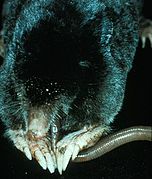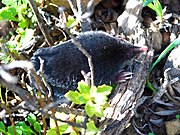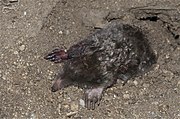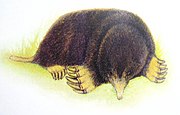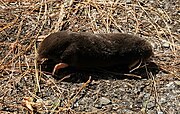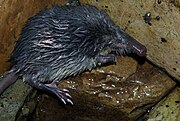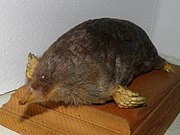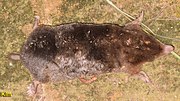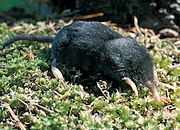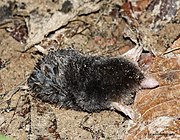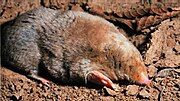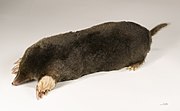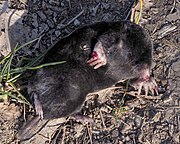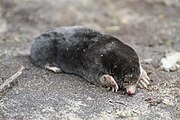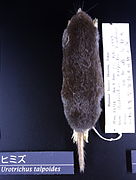List of talpids
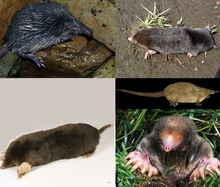
Talpidae is one of the four families of small mammals in the order Eulipotyphla. A member of this family is called a talpid and the family includes moles, shrew moles, and desmans. Talpids are found in North America, Europe, and Asia, primarily in forests, shrublands, grasslands, and wetlands, though some species can also be found in deserts or coastal areas. They range in size from the Chinese shrew mole, at 6 cm (2 in) plus a 5 cm (2 in) tail, to the Russian desman, at 22 cm (9 in) plus a 22 cm (9 in) tail. Talpids primarily eat earthworms, insects, and other invertebrates, but some also consume fish, mollusks, amphibians, crustaceans, plants, and fungi. No talpids have population estimates, but the Pyrenean desman and Echigo mole are categorized as endangered species, while the Russian desman is categorized as critically endangered.
The forty-five extant species of Talpidae are divided into three subfamilies: Scalopinae, containing seven mole species in five genera, Talpinae, containing thirty-three mole, shrew mole, and desman species in eleven genera, and Uropsilinae, containing four shrew mole species in a single genus. A few extinct prehistoric Talpidae species have been discovered, though due to ongoing research and discoveries the exact number and categorization is not fixed.[1]
Conventions
[edit]| Conservation status | |
|---|---|
| EX | Extinct (0 species) |
| EW | Extinct in the wild (0 species) |
| CR | Critically Endangered (1 species) |
| EN | Endangered (2 species) |
| VU | Vulnerable (1 species) |
| NT | Near threatened (1 species) |
| LC | Least concern (35 species) |
| Other categories | |
| DD | Data deficient (4 species) |
| NE | Not evaluated (0 species) |
Conservation status codes listed follow the International Union for Conservation of Nature (IUCN) Red List of Threatened Species. Range maps are provided wherever possible; if a range map is not available, a description of the talpid's range is provided. Ranges are based on the IUCN Red List for that species unless otherwise noted.
Classification
[edit]The family Talpidae consists of three subfamilies: Scalopinae, containing seven mole species in five genera, Talpinae, containing thirty-three mole, shrew mole, and desman species in eleven genera, and Uropsilinae, containing four shrew mole species in a single genus.
Family Talpidae
- Subfamily Scalopinae
- Genus Condylura (star-nosed mole): one species
- Genus Parascalops (hairy-tailed mole): one species
- Genus Scalopus (eastern mole): one species
- Genus Scapanulus (Gansu mole): one species
- Genus Scapanus (western moles): three species
- Subfamily Talpinae
- Genus Desmana (Russian desman): one species
- Genus Dymecodon (True's shrew mole): one species
- Genus Euroscaptor (Asiatic moles): seven species
- Genus Galemys (Pyrenean desman): one species
- Genus Mogera (East Asian moles): seven species
- Genus Neurotrichus (American shrew mole): one species
- Genus Parascaptor (white-tailed mole): one species
- Genus Scaptochirus (short-faced mole): one species
- Genus Scaptonyx (long-tailed mole): one species
- Genus Talpa (European moles): eleven species
- Genus Urotrichus (Japanese shrew mole): one species
- Subfamily Uropsilinae
- Genus Uropsilus (shrew-like moles): four species
Talpids
[edit]The following classification is based on the taxonomy described by the reference work Mammal Species of the World (2005), with augmentation by generally accepted proposals made since using molecular phylogenetic analysis, as supported by both the IUCN and the American Society of Mammalogists.[3]
Subfamily Scalopinae
[edit]| Common name | Scientific name and subspecies | Range | Size and ecology | IUCN status and estimated population |
|---|---|---|---|---|
| Star-nosed mole | C. cristata (Linnaeus, 1758) |
Eastern United States and Canada
|
Size: 10–13 cm (4–5 in) long, plus 5–9 cm (2–4 in) tail[4] Habitat: Forest, shrubland, and inland wetlands[5] Diet: Aquatic invertebrates, as well as other invertebrates, crustaceans, mollusks and small fish[6] |
LC
|
| Common name | Scientific name and subspecies | Range | Size and ecology | IUCN status and estimated population |
|---|---|---|---|---|
| Hairy-tailed mole | P. breweri (Bachman, 1842) |
Eastern United States and Canada
|
Size: 13–18 cm (5–7 in) long, plus 3 cm (1 in) tail[7] Habitat: Forest, shrubland, and grassland[8] Diet: Insects, as well as other invertebrates[7] |
LC
|
| Common name | Scientific name and subspecies | Range | Size and ecology | IUCN status and estimated population |
|---|---|---|---|---|
| Eastern mole | S. aquaticus (Linnaeus, 1758) Four subspecies
|
Eastern and central North America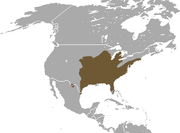
|
Size: 14–19 cm (6–7 in) long, plus 1–4 cm (0.4–1.6 in) tail[9] Habitat: Forest and grassland[10] Diet: Insects and earthworms, as well as plants[9] |
LC
|
| Common name | Scientific name and subspecies | Range | Size and ecology | IUCN status and estimated population |
|---|---|---|---|---|
| Gansu mole
|
S. oweni Thomas, 1912 |
Central China
|
Size: 9–11 cm (4 in) long, plus 3–4 cm (1–2 in) tail[11] Habitat: Forest[12] Diet: Earthworms and other invertebrates[11] |
LC
|
| Common name | Scientific name and subspecies | Range | Size and ecology | IUCN status and estimated population |
|---|---|---|---|---|
| Coast mole | S. orarius (True, 1896) Two subspecies
|
Western United States and Canada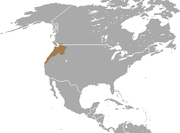
|
Size: 13–19 cm (5–7 in) long, plus 3–5 cm (1–2 in) tail[13] Habitat: Forest, grassland, and coastal marine[14] Diet: Earthworms, as well as other invertebrates, mollusks, plants, and fungi[13] |
LC
|
| Northern broad-footed mole | S. latimanus (Bachman, 1842) Six subspecies
|
Western United States and Mexico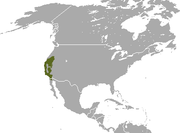
|
Size: 11–19 cm (4–7 in) long, plus 2–6 cm (1–2 in) tail[4] Habitat: Grassland, savanna, and forest[15] Diet: Earthworms and other invertebrates[4] |
LC
|
| Townsend's mole | S. townsendii (Bachman, 1839) |
Western United States and Canada
|
Size: 11–19 cm (4–7 in) long, plus 2–6 cm (1–2 in) tail[4] Habitat: Forest and grassland[16] Diet: Earthworms, as well as other invertebrates and plants[17] |
LC
|
Subfamily Talpinae
[edit]| Common name | Scientific name and subspecies | Range | Size and ecology | IUCN status and estimated population |
|---|---|---|---|---|
| Russian desman | D. moschata (Linnaeus, 1758) |
Western and central Asia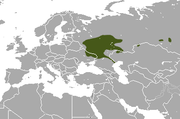
|
Size: 18–22 cm (7–9 in) long, plus 17–22 cm (7–9 in) tail[18] Habitat: Inland wetlands[19] Diet: Fish, mollusks, amphibians, crustaceans, and insects[18] |
CR
|
| Common name | Scientific name and subspecies | Range | Size and ecology | IUCN status and estimated population |
|---|---|---|---|---|
| True's shrew mole | D. pilirostris (True, 1886) |
Japan
|
Size: 6–11 cm (2–4 in) long, plus 2–5 cm (1–2 in) tail[20] Habitat: Forest, shrubland, and grassland[21] Diet: Worms, insects, and other invertebrates[20] |
LC
|
| Common name | Scientific name and subspecies | Range | Size and ecology | IUCN status and estimated population |
|---|---|---|---|---|
| Greater Chinese mole | E. grandis Miller, 1940 |
Southern China
|
Size: About 15 cm (6 in) long, plus 10 cm (4 in) tail[22] Habitat: Forest[23] Diet: Insects and other invertebrates[24] |
LC
|
| Himalayan mole
|
E. micrura (Hodgson, 1841) |
Southern Asia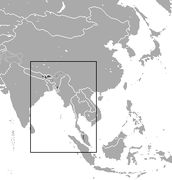
|
Size: 12–14 cm (5–6 in) long, plus 5–9 cm (2–4 in) tail[22] Habitat: Forest[25] Diet: Insects and other invertebrates[24] |
LC
|
| Japanese mountain mole | E. mizura (Günther, 1880) |
Japan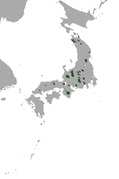
|
Size: About 10 cm (4 in) long, plus 2 cm (1 in) tail[24] Habitat: Forest and grassland[26] Diet: Insects and other invertebrates[24] |
LC
|
| Kloss's mole | E. klossi (Thomas, 1929) |
Southeastern Asia
|
Size: 12–14 cm (5–6 in) long, plus 11–17 cm (4–7 in) tail[22] Habitat: Forest[27] Diet: Insects and other invertebrates[24] |
LC
|
| Long-nosed mole
|
E. longirostris (A. Milne-Edwards, 1870) |
Southeastern China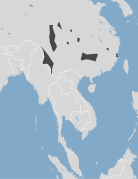
|
Size: 9–15 cm (4–6 in) long, plus 1–3 cm (0.4–1.2 in) tail[22] Habitat: Forest[28] Diet: Insects and other invertebrates[24] |
LC
|
| Small-toothed mole
|
E. parvidens Miller, 1940 |
Southeastern Asia
|
Size: About 14 cm (6 in) long, plus 6 cm (2 in) tail[22] Habitat: Forest[29] Diet: Insects and other invertebrates[24] |
DD
|
| Vietnamese mole
|
E. subanura Kawada, Son, & Can, 2012 |
Northern Vietnam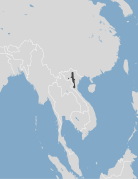
|
Size: 7–9 cm (3–4 in) long, plus 4–6 cm (2–2 in) tail[30] Habitat: Forest[31] Diet: Insects and other invertebrates[24] |
LC
|
| Common name | Scientific name and subspecies | Range | Size and ecology | IUCN status and estimated population |
|---|---|---|---|---|
| Pyrenean desman | G. pyrenaicus (Geoffroy, 1811) Two subspecies
|
Iberian Peninsula
|
Size: 11–16 cm (4–6 in) long, plus 12–16 cm (5–6 in) tail[32] Habitat: Inland wetlands[33] Diet: Insects and crustaceans[34] |
EN
|
| Common name | Scientific name and subspecies | Range | Size and ecology | IUCN status and estimated population |
|---|---|---|---|---|
| Echigo mole | M. etigo Yoshiyuki & Imaizumi, 1991 |
Central Japan
|
Size: 15–18 cm (6–7 in) long, plus 2–3 cm (1 in) tail[35] Habitat: Grassland[36] Diet: Likely earthworms and other invertebrates[24] |
EN
|
| Insular mole
|
M. insularis Swinhoe, 1863 Three subspecies
|
Eastern China, Hainan Island, and Taiwan
|
Size: 8–14 cm (3–6 in) long, plus 1–2 cm (0.4–0.8 in) tail[24] Habitat: Forest[37] Diet: Likely earthworms and other invertebrates[24] |
LC
|
| Japanese mole | M. wogura (Temminck, 1842) |
Southern Japan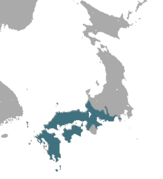
|
Size: 12–18 cm (5–7 in) long, plus 1–3 cm (0.4–1.2 in) tail[35] Habitat: Grassland, shrubland, and forest[38] Diet: Likely earthworms and other invertebrates[24] |
LC
|
| Sado mole | M. tokudae Kuroda, 1940 |
Sado Island, Japan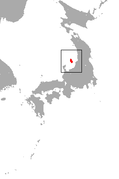
|
Size: 13–17 cm (5–7 in) long, plus 2–3 cm (1 in) tail[35] Habitat: Forest, shrubland, and grassland[39] Diet: Likely earthworms and other invertebrates[24] |
NT
|
| Senkaku mole
|
M. uchidai Abe, Shiraishi, & Arai, 1991 |
Senkaku Islands
|
Size: About 13 cm (5 in) long, plus 2 cm (1 in) tail[24] Habitat: Grassland[40] Diet: Likely earthworms and other invertebrates[24] |
VU
|
| Small Japanese mole | M. imaizumii Kuroda, 1957 |
Japan
|
Size: 10–16 cm (4–6 in) long, plus 1–3 cm (0.4–1.2 in) tail[35] Habitat: Forest, shrubland, and grassland[41] Diet: Likely earthworms and other invertebrates[24] |
LC
|
| Ussuri mole | M. robusta Nehring, 1891 |
Eastern Asia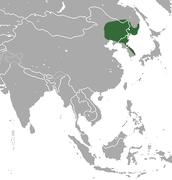
|
Size: 14–20 cm (6–8 in) long, plus about 2 cm (1 in) tail[24] Habitat: Forest[42] Diet: Earthworms, caterpillars and insects[42] |
LC
|
| Common name | Scientific name and subspecies | Range | Size and ecology | IUCN status and estimated population |
|---|---|---|---|---|
| American shrew mole | N. gibbsii (Baird, 1858) |
Western North America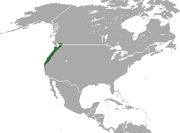
|
Size: 6–9 cm (2–4 in) long, plus 3–5 cm (1–2 in) tail[43] Habitat: Forest, shrubland, grassland, and inland wetlands[44] Diet: Earthworms, insects, other invertebrates, fungi, and seeds[45] |
LC
|
| Common name | Scientific name and subspecies | Range | Size and ecology | IUCN status and estimated population |
|---|---|---|---|---|
| White-tailed mole | P. leucura (Blyth, 1850) |
Eastern Asia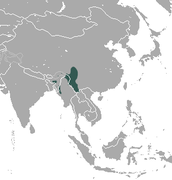
|
Size: 11–12 cm (4–5 in) long, plus 1–2 cm (0.4–0.8 in) tail[20] Habitat: Forest[46] Diet: Likely earthworms and other invertebrates[20] |
LC
|
| Common name | Scientific name and subspecies | Range | Size and ecology | IUCN status and estimated population |
|---|---|---|---|---|
| Short-faced mole
|
S. moschatus H. Milne-Edwards, 1867 |
Northern China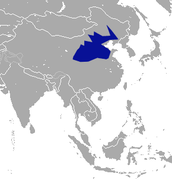
|
Size: About 14 cm (6 in) long, plus 1–2 cm (0.4–0.8 in) tail[47] Habitat: Desert and grassland[48] Diet: Arthropod larvae[48] |
LC
|
| Common name | Scientific name and subspecies | Range | Size and ecology | IUCN status and estimated population |
|---|---|---|---|---|
| Long-tailed mole | S. fusicaudus H. Milne-Edwards, 1872 |
Eastern Asia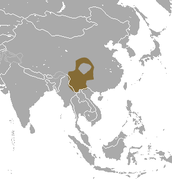
|
Size: 6–9 cm (2–4 in) long, plus 4–6 cm (2 in) tail[49] Habitat: Forest[50] Diet: Likely earthworms and other invertebrates[49] |
LC
|
| Common name | Scientific name and subspecies | Range | Size and ecology | IUCN status and estimated population |
|---|---|---|---|---|
| Altai mole | T. altaica Nikolsky, 1833 |
Northern Asia
|
Size: 9–18 cm (4–7 in) long, plus 1–4 cm (0.4–1.6 in) tail[51] Habitat: Forest[52] Diet: Earthworms, as well as insects[52] |
LC
|
| Balkan mole
|
T. stankovici Martino & Martino, 1931 |
Balkans in Europe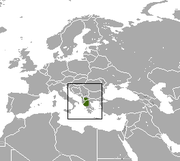
|
Size: 9–18 cm (4–7 in) long, plus 1–4 cm (0.4–1.6 in) tail[51] Habitat: Coastal marine[53] Diet: Worms and insects[51] |
LC
|
| Blind mole | T. caeca Savi, 1822 |
Southern Europe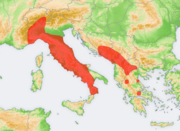
|
Size: 9–18 cm (4–7 in) long, plus 1–4 cm (0.4–1.6 in) tail[51] Habitat: Forest and grassland[54] Diet: Earthworms and other invertebrates[54] |
LC
|
| Caucasian mole | T. caucasica Satunin, 1908 |
Caucasus Mountains in Russia and Georgia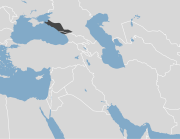
|
Size: 9–18 cm (4–7 in) long, plus 1–4 cm (0.4–1.6 in) tail[51] Habitat: Forest and grassland[55] Diet: Earthworms, as well as insects[55] |
LC
|
| European mole | T. europaea Linnaeus, 1758 |
Europe and western Asia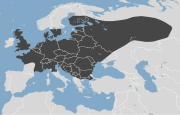
|
Size: 11–16 cm (4–6 in) long, plus 2–4 cm (1–2 in) tail[56] Habitat: Forest, shrubland, and grassland[57] Diet: Earthworms and insects[56] |
LC
|
| Levant mole
|
T. levantis Thomas, 1906 |
Caucasus and Northern Turkey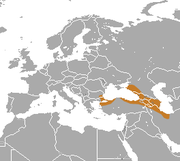
|
Size: 9–18 cm (4–7 in) long, plus 1–4 cm (0.4–1.6 in) tail[51] Habitat: Forest and grassland[58] Diet: Earthworms and other invertebrates[58] |
LC
|
| Ognev's mole
|
T. ognevi Stroganov, 1948 |
Georgia and northeastern Turkey
|
Size: 9–18 cm (4–7 in) long, plus 1–4 cm (0.4–1.6 in) tail[51] Habitat: Forest and grassland[59] Diet: Worms and insects[51] |
LC
|
| Père David's mole
|
T. davidiana (H. Milne-Edwards, 1884) |
Turkey and northwestern Iran
|
Size: 9–18 cm (4–7 in) long, plus 1–4 cm (0.4–1.6 in) tail[51] Habitat: Grassland[60] Diet: Worms and insects[60] |
DD
|
| Roman mole | T. romana Thomas, 1902 |
Southern Italy
|
Size: 9–18 cm (4–7 in) long, plus 1–4 cm (0.4–1.6 in) tail[51] Habitat: Forest[61] Diet: Earthworms[61] |
LC
|
| Spanish mole | T. occidentalis A. Cabrera, 1907 |
Spain and Portugal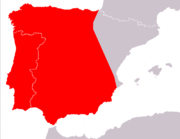
|
Size: 9–18 cm (4–7 in) long, plus 1–4 cm (0.4–1.6 in) tail[51] Habitat: Forest, shrubland, and grassland[62] Diet: Earthworms and other invertebrates[62] |
LC
|
| Talysch mole
|
T. talyschensis Vereshchagin, 1945 |
Southern Azerbaijan and northern Iran
|
Size: 9–18 cm (4–7 in) long, plus 1–4 cm (0.4–1.6 in) tail[51] Habitat: Forest and shrubland[63] Diet: Worms and insects[51] |
LC
|
| Common name | Scientific name and subspecies | Range | Size and ecology | IUCN status and estimated population |
|---|---|---|---|---|
| Japanese shrew mole | U. talpoides Temminck, 1841 |
Japan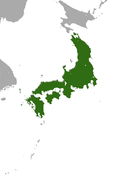
|
Size: 6–11 cm (2–4 in) long, plus 2–5 cm (1–2 in) tail[20] Habitat: Forest, shrubland, and grassland[64] Diet: Insects, spiders, worms, and other invertebrates[20] |
LC
|
Subfamily Uropsilinae
[edit]| Common name | Scientific name and subspecies | Range | Size and ecology | IUCN status and estimated population |
|---|---|---|---|---|
| Anderson's shrew mole
|
U. andersoni (Thomas, 1911) |
Central China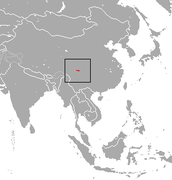
|
Size: 6–9 cm (2–4 in) long, plus 5–8 cm (2–3 in) tail[65] Habitat: Unknown[66] Diet: Invertebrates[65] |
DD
|
| Chinese shrew mole
|
U. soricipes A. Milne-Edwards, 1871 |
Central China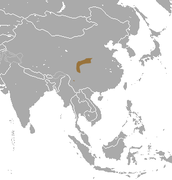
|
Size: 6–8 cm (2–3 in) long, plus 5–7 cm (2–3 in) tail[67] Habitat: Forest[68] Diet: Invertebrates[65] |
LC
|
| Gracile shrew mole
|
U. gracilis (Thomas, 1911) |
Southern China and northern Myanmar
|
Size: 6–9 cm (2–4 in) long, plus 5–8 cm (2–3 in) tail[65] Habitat: Forest, shrubland, and grassland[69] Diet: Invertebrates[65] |
LC
|
| Inquisitive shrew mole
|
U. investigator (Thomas, 1922) |
Southern China
|
Size: 6–9 cm (2–4 in) long, plus 5–8 cm (2–3 in) tail[67] Habitat: Forest and grassland[70] Diet: Invertebrates[65] |
DD
|
References
[edit]- ^ "Fossilworks: Talpidae". Paleobiology Database. University of Wisconsin–Madison. Archived from the original on March 7, 2023. Retrieved March 26, 2024.
- ^ He, K.; Shinohara, A.; Helgen, K. M.; Springer, M. S.; Jiang, X.-L.; Campbell, K. L. (2016). "Talpid Mole Phylogeny Unites Shrew Moles and Illuminates Overlooked Cryptic Species Diversity". Molecular Biology and Evolution. 34 (1): 78–87. doi:10.1093/molbev/msw221. ISSN 0737-4038.
- ^ Wilson, Reeder, pp. 300-311
- ^ a b c d Nowak, pp. 241–242
- ^ a b Cassola, F. (2017) [errata version of 2016 assessment]. "Condylura cristata". IUCN Red List of Threatened Species. 2016: e.T41458A115187740. doi:10.2305/IUCN.UK.2016-3.RLTS.T41458A22322697.en.
- ^ Zera, Sean (2004). "Condylura cristata". Animal Diversity Web. University of Michigan. Archived from the original on March 19, 2024. Retrieved March 16, 2024.
- ^ a b Akers, Ashanti (2022). "Parascalops breweri". Animal Diversity Web. University of Michigan. Archived from the original on March 16, 2024. Retrieved March 16, 2024.
- ^ a b Cassola, F. (2017) [errata version of 2016 assessment]. "Parascalops breweri". IUCN Red List of Threatened Species. 2016: e.T41469A115188181. doi:10.2305/IUCN.UK.2016-3.RLTS.T41469A22322790.en.
- ^ a b Townsend, Shaparis (2023). "Scalopus aquaticus". Animal Diversity Web. University of Michigan. Archived from the original on October 6, 2023. Retrieved March 16, 2024.
- ^ a b Matson, J.; Woodman, N.; Castro-Arellano, I.; de Grammont, P. C. (2017) [errata version of 2016 assessment]. "Scalopus aquaticus". IUCN Red List of Threatened Species. 2016: e.T41471A115188304. doi:10.2305/IUCN.UK.2016-3.RLTS.T41471A22319923.en.
- ^ a b Nowak, p. 239
- ^ a b Smith, A. T.; Johnston, C. H. (2017) [errata version of 2016 assessment]. "Scapanulus oweni". IUCN Red List of Threatened Species. 2016: e.T41472A115188420. doi:10.2305/IUCN.UK.2016-3.RLTS.T41472A22322596.en.
- ^ a b Rochon, Ingrid (2012). "Scapanus orarius". Animal Diversity Web. University of Michigan. Archived from the original on December 10, 2023. Retrieved March 16, 2024.
- ^ a b Cassola, F. (2017) [errata version of 2016 assessment]. "Scapanus orarius". IUCN Red List of Threatened Species. 2016: e.T41474A115188698. doi:10.2305/IUCN.UK.2016-3.RLTS.T41474A22322249.en.
- ^ a b Matson, J.; Woodman, N.; Castro-Arellano, I.; de Grammont, P. C. (2017) [errata version of 2016 assessment]. "Scapanus latimanus". IUCN Red List of Threatened Species. 2016: e.T41473A115188559. doi:10.2305/IUCN.UK.2016-3.RLTS.T41473A22322141.en.
- ^ a b Cassola, F. (2016). "Scapanus townsendii". IUCN Red List of Threatened Species. 2016: e.T41475A22322352. doi:10.2305/IUCN.UK.2016-2.RLTS.T41475A22322352.en.
- ^ Timmer, David (2004). "Scapanus townsendii". Animal Diversity Web. University of Michigan. Archived from the original on December 3, 2023. Retrieved March 16, 2024.
- ^ a b Ellis, Eric J. (2024). "Desmana moschata". Animal Diversity Web. University of Michigan. Archived from the original on September 28, 2023. Retrieved March 16, 2024.
- ^ a b Rutovskaya, M.; Gazzard, A.; Turvey, S. T. (2023). "Desmana moschata". IUCN Red List of Threatened Species. 2023: e.T6506A231334630. doi:10.2305/IUCN.UK.2023-1.RLTS.T6506A231334630.en.
- ^ a b c d e f Nowak, p. 237
- ^ a b Laginha Pinto Correia, D. (2016). "Dymecodon pilirostris". IUCN Red List of Threatened Species. 2016: e.T41488A22323252. doi:10.2305/IUCN.UK.2016-1.RLTS.T41488A22323252.en.
- ^ a b c d e Smith; Xie, pp. 322–323
- ^ a b Ruedas, L.; Smith, A. T. (2016). "Euroscaptor grandis". IUCN Red List of Threatened Species. 2016: e.T41459A22320623. doi:10.2305/IUCN.UK.2016-1.RLTS.T41459A22320623.en.
- ^ a b c d e f g h i j k l m n o p q Nowak, p. 236
- ^ a b Molur, S. (2016). "Euroscaptor micrura". IUCN Red List of Threatened Species. 2016: e.T41462A22320005. doi:10.2305/IUCN.UK.2016-2.RLTS.T41462A22320005.en.
- ^ a b Laginha Pinto Correia, D. (2016). "Euroscaptor mizura". IUCN Red List of Threatened Species. 2016: e.T8385A22320533. doi:10.2305/IUCN.UK.2016-1.RLTS.T8385A22320533.en.
- ^ a b Cassola, F. (2017) [errata version of 2016 assessment]. "Euroscaptor klossi". IUCN Red List of Threatened Species. 2016: e.T41460A115187862. doi:10.2305/IUCN.UK.2016-3.RLTS.T41460A22320395.en.
- ^ a b Smith, A. T. (2016). "Euroscaptor longirostris". IUCN Red List of Threatened Species. 2016: e.T41461A22320106. doi:10.2305/IUCN.UK.2016-2.RLTS.T41461A22320106.en.
- ^ a b Chiozza, F. (2016). "Euroscaptor parvidens". IUCN Red List of Threatened Species. 2016: e.T8386A22320303. doi:10.2305/IUCN.UK.2016-1.RLTS.T8386A22320303.en.
- ^ Abramov, A. V.; Shchinov, A. V.; Tran Quang, T. (2013). "Insectivorous mammals (Mammalia: Eulipotyphla) of the Ba Vi National Park, Northern Vietnam". Proceedings of the Zoological Institute of the Russian Academy of Sciences. 317 (3): 221–225. doi:10.31610/trudyzin/2013.317.3.221.
- ^ a b Engelbrektsson, P. (2016). "Euroscaptor subanura". IUCN Red List of Threatened Species. 2016: e.T45955241A45973076. doi:10.2305/IUCN.UK.2016-1.RLTS.T45955241A45973076.en.
- ^ Nowak, p. 232
- ^ a b Quaglietta, L. (2022) [amended version of 2021 assessment]. "Galemys pyrenaicus". IUCN Red List of Threatened Species. 2022: e.T8826A214429993. doi:10.2305/IUCN.UK.2022-1.RLTS.T8826A214429993.en.
- ^ Weinstein, Bret (2024). "Galemys pyrenaicus". Animal Diversity Web. University of Michigan. Archived from the original on March 16, 2024. Retrieved March 16, 2024.
- ^ a b c d Kawada, S. I. (2016). "Morphological review of the Japanese mountain mole (Eulipotyphla, Talpidae) with the proposal of a new genus". Mammal Study. 41 (4): 191–205. doi:10.3106/041.041.0404.
- ^ a b Laginha Pinto Correia, D. (2016). "Mogera etigo". IUCN Red List of Threatened Species. 2016: e.T13604A22323841. doi:10.2305/IUCN.UK.2016-1.RLTS.T13604A22323841.en.
- ^ a b Smith, A. T.; Johnston, C. H. (2016). "Mogera insularis". IUCN Red List of Threatened Species. 2016: e.T41463A22323693. doi:10.2305/IUCN.UK.2016-2.RLTS.T41463A22323693.en.
- ^ a b Cassola, F. (2016). "Mogera wogura". IUCN Red List of Threatened Species. 2016: e.T41467A22323418. doi:10.2305/IUCN.UK.2016-2.RLTS.T41467A22323418.en.
- ^ a b Kennerley, R. (2017) [errata version of 2016 assessment]. "Mogera tokudae". IUCN Red List of Threatened Species. 2016: e.T13603A115115846. doi:10.2305/IUCN.UK.2016-3.RLTS.T13603A22323941.en.
- ^ a b Laginha Pinto Correia, D. (2016). "Mogera uchidai". IUCN Red List of Threatened Species. 2016: e.T14563A22323327. doi:10.2305/IUCN.UK.2016-2.RLTS.T14563A22323327.en.
- ^ a b Cassola, F. (2016). "Mogera imaizumii". IUCN Red List of Threatened Species. 2016: e.T41465A22323581. doi:10.2305/IUCN.UK.2016-2.RLTS.T41465A22323581.en.
- ^ a b c Tsytsulina, K. (2017). "Mogera robusta". IUCN Red List of Threatened Species. 2017: e.T41466A22323489. doi:10.2305/IUCN.UK.2017-2.RLTS.T41466A22323489.en.
- ^ Nowak, p. 238
- ^ a b Cassola, F. (2017) [errata version of 2016 assessment]. "Neurotrichus gibbsii". IUCN Red List of Threatened Species. 2016: e.T41468A115188045. doi:10.2305/IUCN.UK.2016-3.RLTS.T41468A22323093.en.
- ^ Gochis, Emily (2002). "Neurotrichus gibbsii". Animal Diversity Web. University of Michigan. Archived from the original on June 9, 2023. Retrieved March 16, 2024.
- ^ a b Molur, S. (2016). "Parascaptor leucura". IUCN Red List of Threatened Species. 2016: e.T41470A22322993. doi:10.2305/IUCN.UK.2016-2.RLTS.T41470A22322993.en.
- ^ Nowak, p. 235
- ^ a b c Smith, A. T.; Johnston, C. H. (2017) [errata version of 2016 assessment]. "Scaptochirus moschatus". IUCN Red List of Threatened Species. 2016: e.T41476A115188844. doi:10.2305/IUCN.UK.2016-3.RLTS.T41476A22322461.en.
- ^ a b Nowak, p. 233
- ^ a b Chiozza, F. (2016). "Scaptonyx fusicaudus". IUCN Red List of Threatened Species. 2016: e.T41477A22322866. doi:10.2305/IUCN.UK.2016-2.RLTS.T41477A22322866.en.
- ^ a b c d e f g h i j k l m Nowak, p. 234
- ^ a b c Stubbe, M.; Samiya, R.; Ariunbold, J.; Buuveibaatar, V.; Dorjderem, S.; Monkhzul, T.; Otgonbaatar, M.; Tsogbadrakh, M.; Gankhuyag, P. (2017). "Talpa altaica". IUCN Red List of Threatened Species. 2017: e.T41478A22321277. doi:10.2305/IUCN.UK.2017-2.RLTS.T41478A22321277.en.
- ^ a b Vladimir Vohralík, Boris Kryštufek. (2016). "Talpa stankovici". IUCN Red List of Threatened Species. 2016: e.T41485A2953771. doi:10.2305/IUCN.UK.2016-2.RLTS.T41485A2953771.en.
- ^ a b c Cassola, F. (2016). "Talpa caeca". IUCN Red List of Threatened Species. 2016: e.T41479A2953438. doi:10.2305/IUCN.UK.2016-2.RLTS.T41479A2953438.en.
- ^ a b c Gazzard, A.; Kryštufek, B. (2023). "Talpa caucasica". IUCN Red List of Threatened Species. 2023: e.T221753755A221753922. doi:10.2305/IUCN.UK.2023-1.RLTS.T221753755A221753922.en.
- ^ a b Sondergaard, Emily (2006). "Talpa europaea". Animal Diversity Web. University of Michigan. Archived from the original on December 8, 2023. Retrieved March 16, 2024.
- ^ a b Gazzard, A.; Atkinson, R. (2023). "Talpa europaea". IUCN Red List of Threatened Species. 2023: e.T221751920A221752008. doi:10.2305/IUCN.UK.2023-1.RLTS.T221751920A221752008.en.
- ^ a b c Gazzard, A. (2023). "Talpa levantis". IUCN Red List of Threatened Species. 2023: e.T221754684A221754963. doi:10.2305/IUCN.UK.2023-1.RLTS.T221754684A221754963.en.
- ^ a b Gazzard, A.; Kryštufek, B. (2023). "Talpa ognevi". IUCN Red List of Threatened Species. 2023: e.T221753106A221753660. doi:10.2305/IUCN.UK.2023-1.RLTS.T221753106A221753660.en.
- ^ a b c Gerrie, R.; Kennerley, R. (2017). "Talpa davidiana". IUCN Red List of Threatened Species. 2017: e.T135458A22321046. doi:10.2305/IUCN.UK.2017-2.RLTS.T135458A22321046.en.
- ^ a b c Amori, G. (2016). "Talpa romana". IUCN Red List of Threatened Species. 2016: e.T41484A2953688. doi:10.2305/IUCN.UK.2016-2.RLTS.T41484A2953688.en.
- ^ a b c Cassola, F. (2016). "Talpa occidentalis". IUCN Red List of Threatened Species. 2016: e.T41483A2953593. doi:10.2305/IUCN.UK.2016-2.RLTS.T41483A2953593.en.
- ^ a b Gazzard, A.; Kryštufek, B. (2023). "Talpa talyschensis". IUCN Red List of Threatened Species. 2023: e.T221754376A221754615. doi:10.2305/IUCN.UK.2023-1.RLTS.T221754376A221754615.en.
- ^ a b Cassola, F. (2016). "Urotrichus talpoides". IUCN Red List of Threatened Species. 2016: e.T41489A22323186. doi:10.2305/IUCN.UK.2016-2.RLTS.T41489A22323186.en.
- ^ a b c d e f Nowak, p. 230
- ^ a b Johnston, C.; Smith, A. T. (2016). "Uropsilus andersoni". IUCN Red List of Threatened Species. 2016: e.T41486A22321699. doi:10.2305/IUCN.UK.2016-1.RLTS.T41486A22321699.en.
- ^ a b Smith; Xie, p. 327
- ^ a b Smith, A. T.; Johnston, C. H. (2016). "Uropsilus soricipes". IUCN Red List of Threatened Species. 2016: e.T22810A22322040. doi:10.2305/IUCN.UK.2016-2.RLTS.T22810A22322040.en.
- ^ a b Chiozza, F. (2017). "Uropsilus gracilis". IUCN Red List of Threatened Species. 2017: e.T41487A22321800. doi:10.2305/IUCN.UK.2017-2.RLTS.T41487A22321800.en.
- ^ a b Johnston, C.; Smith, A. T. (2016). "Uropsilus investigator". IUCN Red List of Threatened Species. 2016: e.T22809A22321929. doi:10.2305/IUCN.UK.2016-1.RLTS.T22809A22321929.en.
Sources
[edit]- Nowak, Ronald M. (1999). Walker's Mammals of the World. Vol. 1. Johns Hopkins University Press. ISBN 978-0-8018-5789-8.
- Smith, Andrew T.; Xie, Yan, eds. (2010). A Guide to the Mammals of China. Princeton University Press. ISBN 978-1-4008-3411-2.
- Hutterer, Rainer (2005). Wilson, Don E.; Reeder, DeeAnn M. (eds.). Mammal Species of the World. Vol. 1 (3rd ed.). Johns Hopkins University Press. ISBN 978-0-8018-8221-0.




